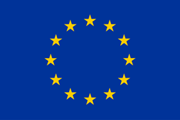Algorithms for image processing that will form the brain of the SHUTTLE toolkit. The algorithms will process the images acquired by the microscope and classify the different types of microtraces present on the tape. The results of the algorithms are a table that contains a number of parameter vectors for every microtrace, such as the coordinates on the tape, the colour, polarisation characteristics, morphology, and class (e.g. ‘blood’, ‘fibre’, ‘glass’, etc.). These algorithms can be executed via a GUI (graphical user interface). Via this GUI, users can execute the algorithms developed within the SHUTTLE project. In addition, they can develop and share additional algorithms and plug them into the GUI. Such additional algorithms may serve to classify additional microtraces, or to make a better subclassification. As an example, the SHUTTLE toolkit might classify a microtrace as a ‘hair’, while additional algorithms can discriminate and classify ‘scalp hairs, ‘pubic hairs’, ‘body hair’, or even discriminate hairs from different animals.
Home »
Image processing
News and Events
- The report on the SHUTTLE public workshop is now available
- SHUTTLE Final Workshop at the EAFS 2022 conference – May 30th to June 3rd in Stockholm
- The SHUTTLE project will be an exhibitor at the SRE 2022
- The SHUTTLE project video is now online
- “Improving Forensic Trace Recovery” online workshop on 1-5 February
Search
European Commission

European Union’s Horizon 2020 research and innovation programme
This project has received funding from the European Union’s Horizon 2020 research and innovation programme under grant agreement No 786913. This site reflects only the author’s view and the Commission is not responsible for any use that may be made of the information it contains.
